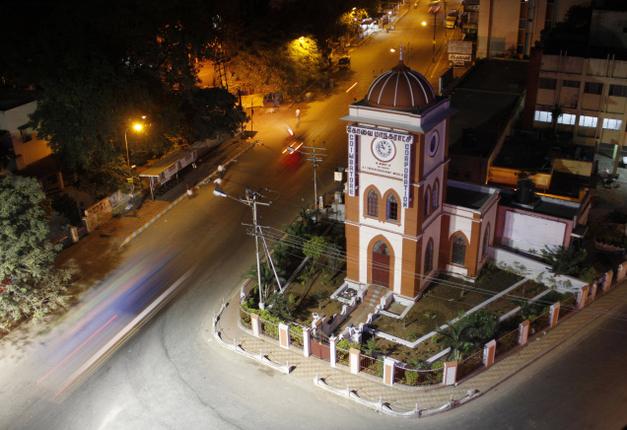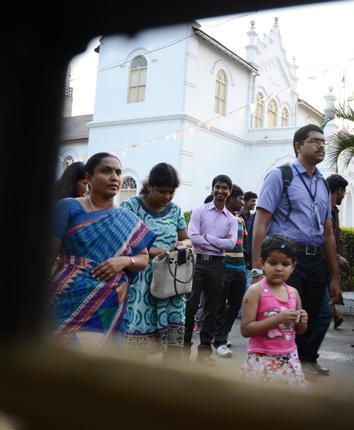Old buildings and by-lanes unveil their past to PARSHATHY J. NATH as she goes on a heritage walk

“I have never looked so carefully at these buildings before,” says Ramya Raghuram, a corporate employee as we wend our way around honking vehicles and bullock carts around Town Hall. She is not alone in this observation. All of us in the heritage tour, organised by the Indian National Trust for Art, Culture and Heritage and The Vanavarayar Foundation, are struck by the old buildings that crowd the lanes of Town Hall.

The walk, which begins at the Manikoondu bus stop, has its first halt at Victoria Town Hall, built in 1892. Epigraphist R. Jegadeesan, our guide, tells us a little about the history of the place. “It was built to commemorate Queen Victoria’s 50th year of reign. Similar buildings were commissioned in Tiruchi and Tirupur.”
In 1993, Jegadeesan said, there were talks of demolishing Town Hall because the building was damaged, but Commissioner Niranjan Martin sanctioned a sum of Rs. nine lakh to renovate the building while retaining its original structure.”
We stop before an old house. “This is the house where Kovai Tamil Sangam, a group of Tamil scholars, functioned from. Poets such as Subramaniya Mudaliyar wrote from here and newsletters on Kongunadu’s history were brought out,” says Jegadeesan.
Karuppu Gounder Street was named after a Telugu businessman. It is one of the many veedhis with Telugu and Kannada names. We learn that Coimbatore was home to Telugus and Kannadiga migrants in the 12th Century. Here, we halt in front of a cream-coloured Vishnu temple. “This temple stands on a site where there was a small temple built in the 17th Century temple during the reign of Chikka Devaraja Wodeyar. Here, the members of the Jetty community practised Silambattam,” says Jagadeesan.
Raja Veedhi is also known as the Thermutti Veedhi as the temple chariot halts here during festivals. “The street got its name from the chieftain, Maadhaian Raja. It was called Maadhaian Raja Veedhi; today, it has been shortened to Raja Veedhi,” says Jegadeesan.
A red brick building, built in 1862 used to be the collector’s bungalow. As we walk, a discussion springs up between Senthur Pandian, a history teacher from the Government Arts College, and some history students. “Kovai has been ruled by different South Indian dynasties such as the Cheras, Cholas and Pandiyas in the 11th Century. However, the history of Kongunadu before the 11th Century is largely undocumented,” says Senthur.
We come a full circle and end the walk at Manikoondu, now bathed in the glow of neon lights. Students huddle around Jegadeesan wanting to know more. “How did Oppanakkara street get its name?” “Oppanakkara Veedhi is so named because it was once a centre of Telugu tax collectors calledOppanaharu,” Jegadeesan answers.
The students are pleased. “We have read about these places in our text books but seeing them for real was fascinating,” says Silambarasan K, a Ph. D scholar in history. “I will not look at Town Hall the same way again.”
These heritage tours are important for students, says Senthur. “Since they have seen these places themselves, they will understand their city’s history better.”
STOP AND GO
Karuppu Gounder Street Named after a Telugu businessman
Oppanakkara Veedhi Was once a centre of Telugu tax collectors called Oppanaharu Febr
Victoria Town Hall Built in 1892 to commemorate Queen Victoria’s 50th year of reign
source: http://www.thehindu.com / The Hindu / Home> Features> MetroPlus> Events / by Parshaty J Nath / Coimbatore – February 05th, 2014